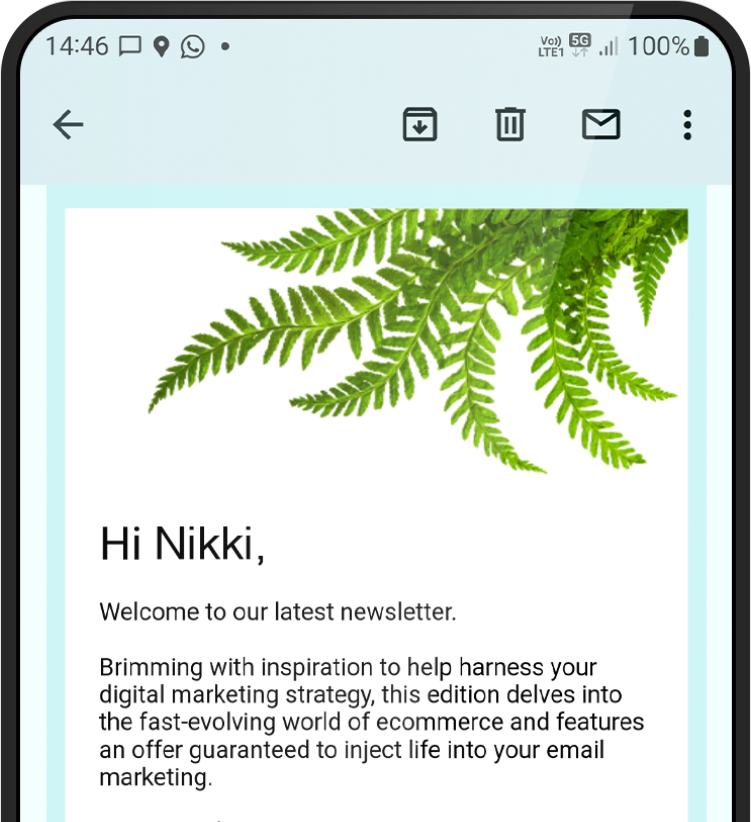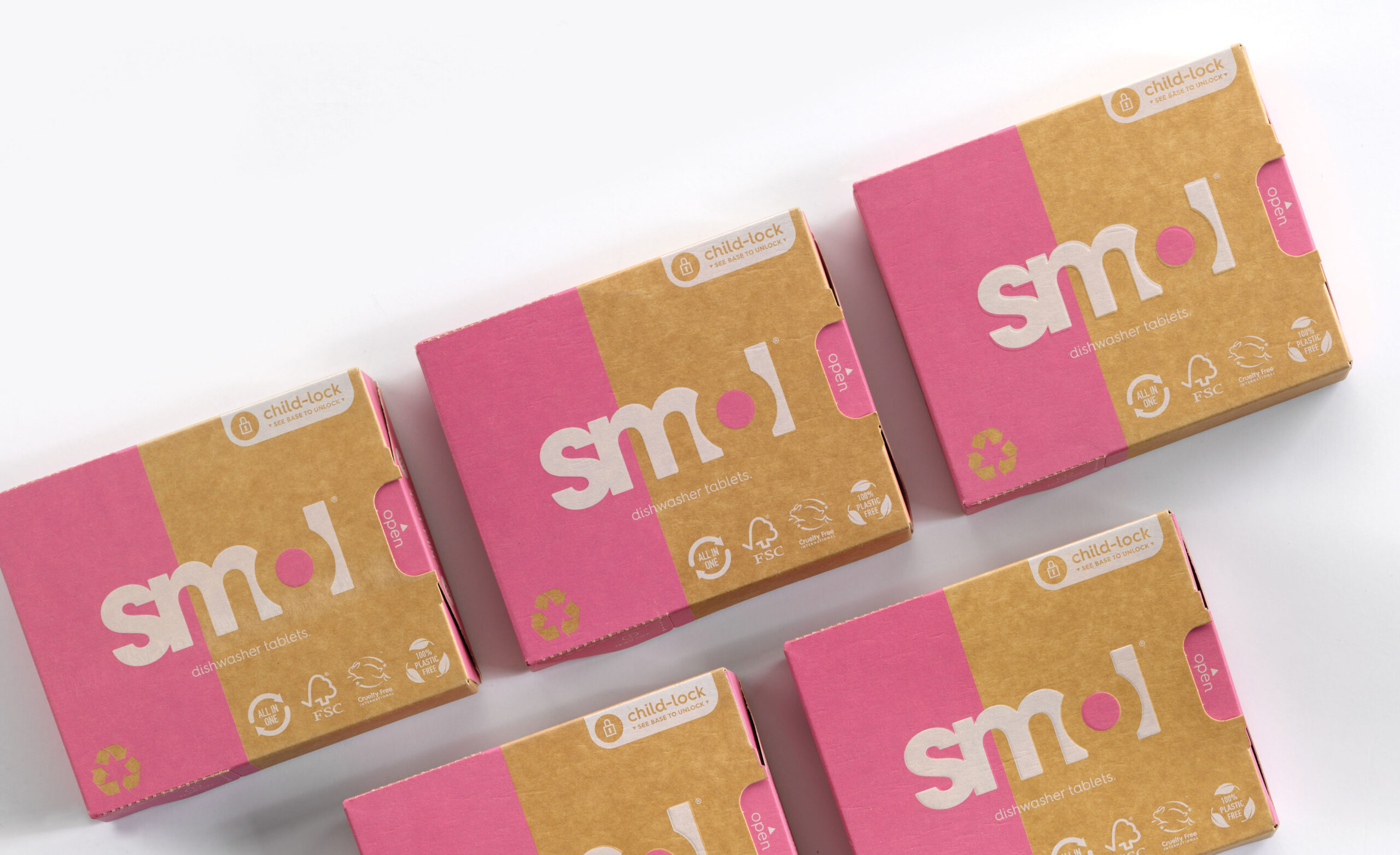
Five top tips for landing a job in the design industry
By Ben Walker on 31 August 2021
Graphic design is an incredibly rewarding career path, but it can also be a competitive industry to break into.
To support recent and upcoming graphic design graduates, our Founder and Creative Director, Ben Walker, would like to share five pieces of advice he’s learnt throughout his career that we hope you’ll find useful too.
1. Secure an internship
Experience is a requirement on almost every job advert in this industry, even for junior positions, so my first piece of advice is to try to gain at least one internship with a design agency.
This will give you the opportunity to learn from experienced creatives and gain an insight into the day to day running of an agency. You’ll also be able to include this on your CV, which will show initiative and help to differentiate you from other applicants.
At this stage, I don’t think interning for months at a time is always worthwhile. Even a couple of weeks of experience can be incredibly beneficial, and in many instances more practical, particularly if the internships you’re applying for are unpaid.
I secured summer internships at two design agencies when studying and upon graduating, one of these agencies offered me my first job as a junior designer. So, whilst internships can help to develop your skills and knowledge, they are also an opportunity to show what you can do and get your foot in the door with a prospective employer. Even if they don’t have a role for you right away, you’ve made a connection for the future.
2. Plan your portfolio
Many agencies receive hundreds of portfolios every year, so really take time to consider how to set yours apart.
Firstly, I would suggest showcasing your ability to design for different sectors. Packaging for a food and drink brand, a website for a charity and an annual report for a bank, for example, would all have a distinct look and feel. Varying the projects in your portfolio will demonstrate your versatility and appeal to more employers, maximising your opportunities.
I would also recommend focusing on quality over quantity. Five or six fantastic projects that outline how a concept can be applied across various disciplines will be much more impressive than 13 projects that haven’t been developed thoroughly.
If you’ve designed a great logo, think about how you could expand upon this. Could you visualise how the brand would be rolled out online, creating a homepage for desktop and mobile to showcase your ability to handle responsive web design? If it’s a new company or product, might the concept lend itself well to a social media advertising campaign or an e-newsletter? Expanding the extent of deliverables for each project will give prospective employers a better idea of your understanding of branding and add depth to your projects.
I receive the vast majority of applications via email and would therefore recommend thinking outside the box. Why not consider posting a printed portfolio as a brochure or loose case study sheets in a folder? This technique isn’t used often but offering something tactile that prospective employers can hold in their hands is much more intriguing and memorable than an attachment or link in an email.
3. Refine your CV
After investing time and effort in crafting your portfolio, you won’t want to miss the mark when it comes to your CV. In this industry, attention to detail is paramount and a professional, well-structured CV is integral to any application.
First and foremost, always proofread your CV, particularly if you struggle with spelling and grammar. I’m a great believer that two heads are better than one, and three heads are better than two, so ask various people to review your CV. I went through over twenty iterations of my CV when I was at college and each draft helped to refine and improve it.
Spending time considering the design and composition of your CV is also essential. This is a document you want the recipient to read after all. I recommend you don’t exceed two pages, as it’s unlikely employers will have time to read more than this.
Most CVs are portrait in format, but with less employers printing and instead viewing them on screen, you could opt for a landscape format to make the most of the space on a laptop or monitor screen.
When it comes to typography, keep it simple and legible with a clear hierarchy and avoid anything that could make your CV difficult to read, like condensed typefaces. Although a touch of colour can enhance your CV, I would avoid colour backgrounds or reversed out text, as this can hinder legibility and waste ink if printed.
I would also recommend carefully checking that all formatting has been applied consistently for leading, spacing between sections and any design elements. I’m a big fan of keylines as they help to break up information, making it easier for the reader to digest, and offer a simple yet effective way to add structure to a document.
Although two columns are widely used, this can feel lacking in creativity. Using an odd number of columns will generally result in a better composition and help to maximise your use of space. Content in CVs often has a short line length and is displayed in bullet point format, which is generally more aesthetically pleasing split into multiple columns.
4. Tailor your approach
I receive applications almost daily from designers seeking jobs, and it’s those who tailor their approach that grab my attention.
First, it’s worth a quick phone call to find out who to address your application to.
Next, research the agency you’re approaching and mention something unique to them in your application, even if it’s as simple as saying how much you love a specific project they worked on, or that you found a journal article they’ve written insightful. Putting in a little extra work at this stage instead of sending a blanket email will demonstrate that you’ve spent time getting to know the agency, increasing the likelihood you’ll receive a response.
It’s also essential to customise every application to explain how your skills and experience meet the job description. If you don’t yet have examples to draw on from a job or internship, don’t be disheartened – you’ll be surprised how many transferable skills you’ve acquired. For example, if the requirements include strong communication skills, you could discuss projects you’ve collaborated on with other graphic design students, or presentations you’ve delivered at college or university. Your cover letter is a great opportunity to sell yourself, explaining exactly how you can add value to a company.
If you get to the interview stage, always do your research on who will be in the room and prepare some questions to ask. Remember, an interview isn’t just an opportunity for a prospective employer to find out more about you, it’s a chance for you to work out whether the role and agency are the right fit for you.
Whilst some companies use recruitment agencies, many don’t. So, another tip is to keep an eye on their social media channels, as it’s often one of the first places they’ll post vacancies.
5. Keep expanding your skillset
It can take time to find your first job upon graduating, so I would encourage you to dedicate as much spare time as possible to expanding your skillset. It may sound obvious, but the design industry is always evolving and every good designer, regardless of their experience, should be open to doing the same. Learning is one of our core values at Firefly, and we set aside time each week for the team to focus on their personal development.
Today more than ever, agencies and their teams need to be ready to adapt, whether that’s transitioning to working from home or reacting to the next big change in digital design.
To give you an example, recently dark mode was introduced, heavily impacting the way e-newsletters should be designed and built. So, if you have a relevant project in your portfolio, you could showcase how an e-newsletter adapts to both light and dark mode.
There are countless online workshops, courses and talks available at our fingertips and broadening your understanding of relevant apps and software is hugely beneficial. Whether its learning After Effects or getting to grips with Webflow, demonstrating your ability and eagerness to learn new skills will look great on your CV.
All that’s left to say is we wish you the best of luck as you take this exciting next step in your career.
To be the first to hear about new videos, articles, and interviews you may find useful when preparing and applying for jobs in the design industry, follow us on Instagram or sign up to our newsletter.
Thank you
Success! We've received your message and will get back to you as soon as possible. We look forward to chatting to you.
“I really appreciate the work you put into our website and the end result looks marvellous. We are very happy with the whole package.”
Tom Watt
Owner
Sheridan Guest House





